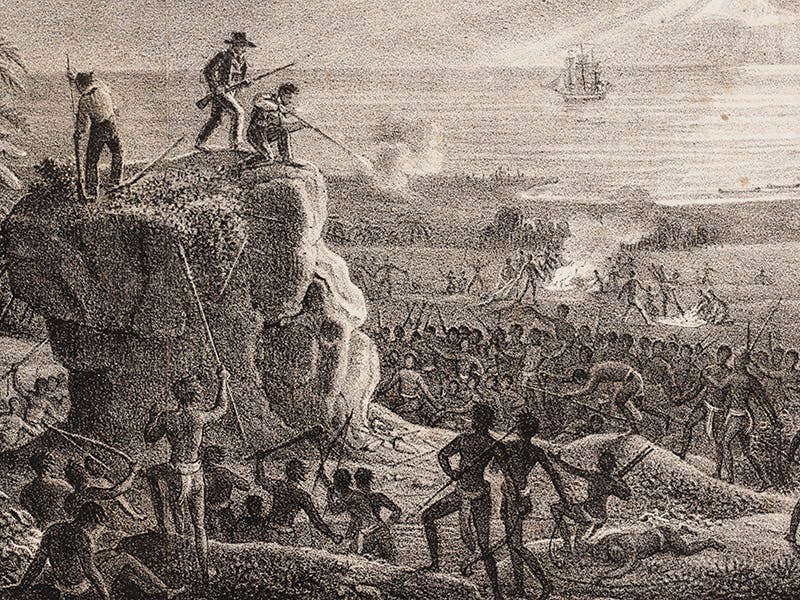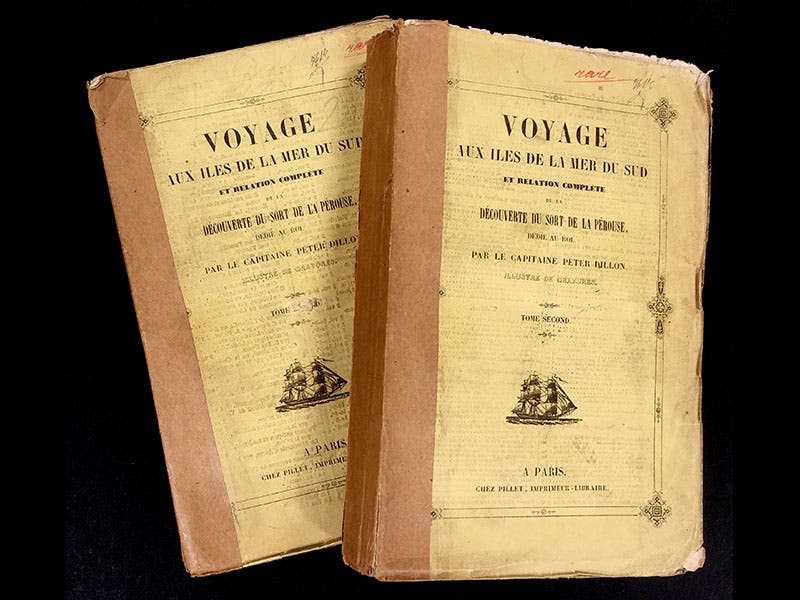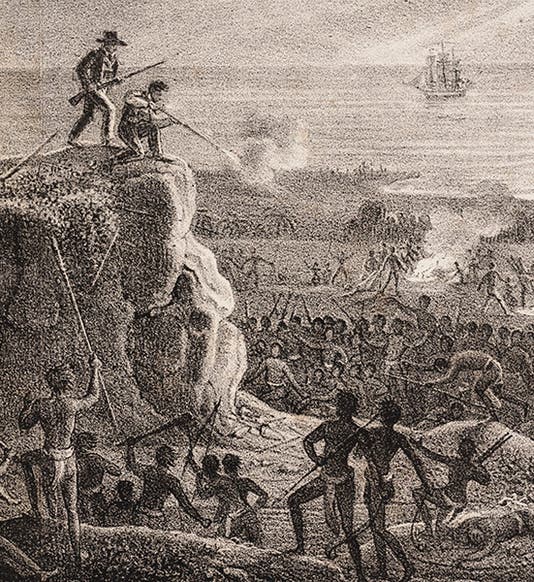Scientist of the Day - Peter Dillon





Peter Dillon, an English adventurer, was born June 15, 1788. Three months after Dillon’s birth, the French ships Astrolabe and Boussole, commanded by Jean François de Galaup, comte de La Pérouse, sailed from Sydney harbor and disappeared from the face of the earth. Several subsequent search expeditions were unsuccessful. In 1826, Dillon, then commander of a small English ship, chanced upon the island of Tikopia, in the Santa Cruz group of the Solomon Islands, east of New Guinea. He found that the natives there had tableware, weapons, and trinkets of European origin, which they said came from a shipwreck many years ago on the nearby island of Mannicolo. Returning to Calcutta, Dillon persuaded the British authorities to underwrite an expedition to Mannicolo. Dillon arrived there in 1827 and collected more artifacts, and learned that there had been two ships wrecked on the fringing reef around the island, that some of the crew had survived and built a third boat from the wreckage and sailed off, and that several other survivors had remained on the island but had since died.
Dillon took his salvage back to Paris, where he meet Jean Baptiste Barthélemy de Lesseps, who had been with La Pérouse on the ill-fated voyage but had returned before the ships sailed for the Solomons, and Lesseps identified the articles as belonging to the Astrolabe and Boussole. Dillon wrote an account of his discovery of the fate of La Pérouse; an English version was published in 1829 and a French edition in 1830. We have the French edition in the History of Science Collection (second image); we displayed it in our Voyages exhibition in 2002, along with other works relevant to the La Pérouse expedition. The three images above are from this work; in fact, they constitute the entirety of the illustrations included in the two-volume narrative. The two scenes depict events from previous Dillon voyages; for one of them, showing Dillon and two companions making a stand on a rock against a native attack, we provide a detail, simply because it is an exciting scene (first image). The map is more relevant to our story, since it depicts Mannicolo and the spot along the reef where the ships capsized, as well as locations where other artifacts were recovered. Mannicolo is now known as Vanikoro.
The French were quite pleased to learn at last the fate of La Pérouse, and Dillon was awarded the Legion of Honor and given a pension for life. He died in 1847.
Dr. William B. Ashworth, Jr., Consultant for the History of Science, Linda Hall Library and Associate Professor, Department of History, University of Missouri-Kansas City. Comments or corrections are welcome; please direct to ashworthw@umkc.edu.






